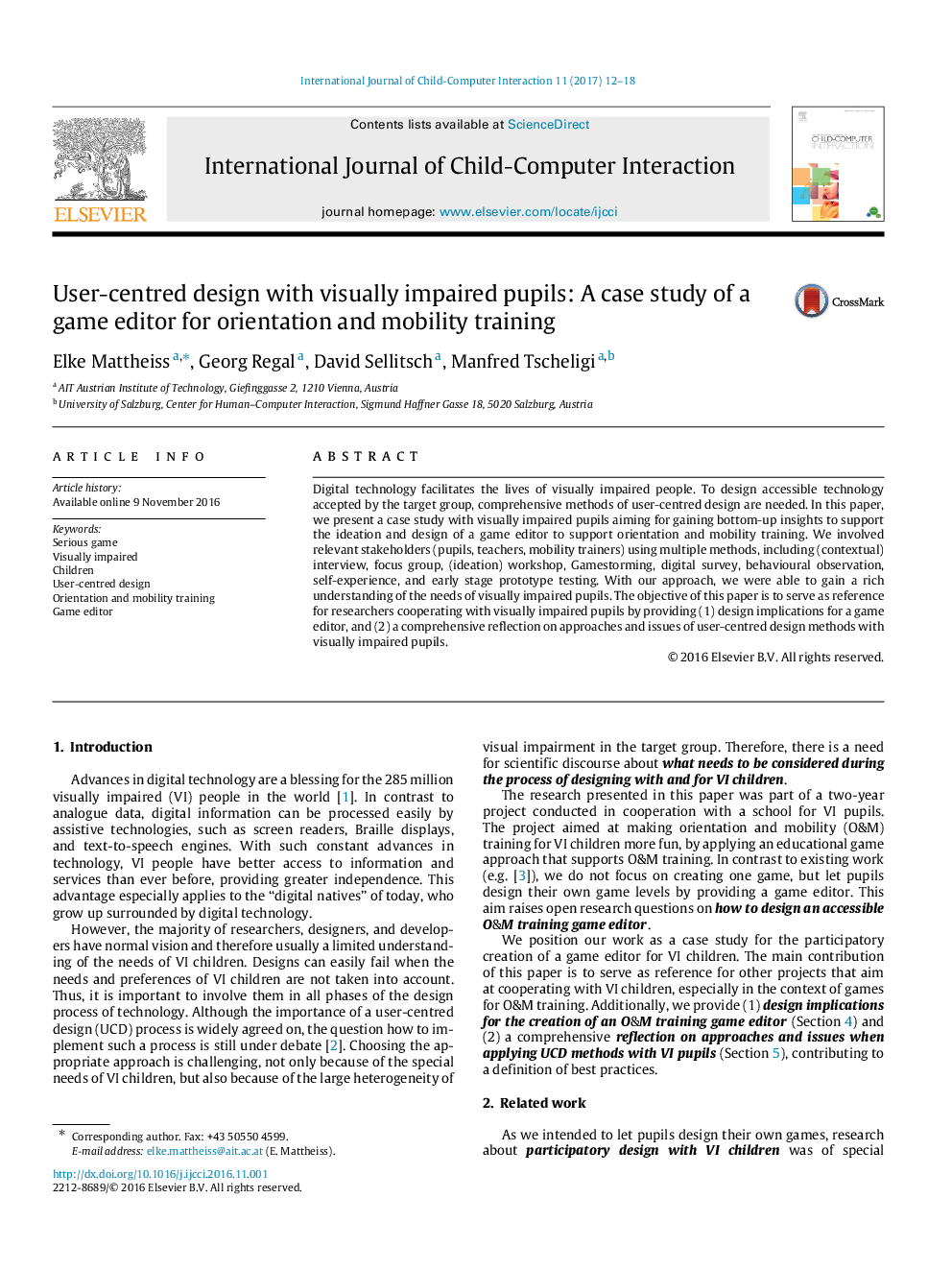| Article ID | Journal | Published Year | Pages | File Type |
|---|---|---|---|---|
| 4931282 | International Journal of Child-Computer Interaction | 2017 | 7 Pages |
Digital technology facilitates the lives of visually impaired people. To design accessible technology accepted by the target group, comprehensive methods of user-centred design are needed. In this paper, we present a case study with visually impaired pupils aiming for gaining bottom-up insights to support the ideation and design of a game editor to support orientation and mobility training. We involved relevant stakeholders (pupils, teachers, mobility trainers) using multiple methods, including (contextual) interview, focus group, (ideation) workshop, Gamestorming, digital survey, behavioural observation, self-experience, and early stage prototype testing. With our approach, we were able to gain a rich understanding of the needs of visually impaired pupils. The objective of this paper is to serve as reference for researchers cooperating with visually impaired pupils by providing (1) design implications for a game editor, and (2) a comprehensive reflection on approaches and issues of user-centred design methods with visually impaired pupils.
